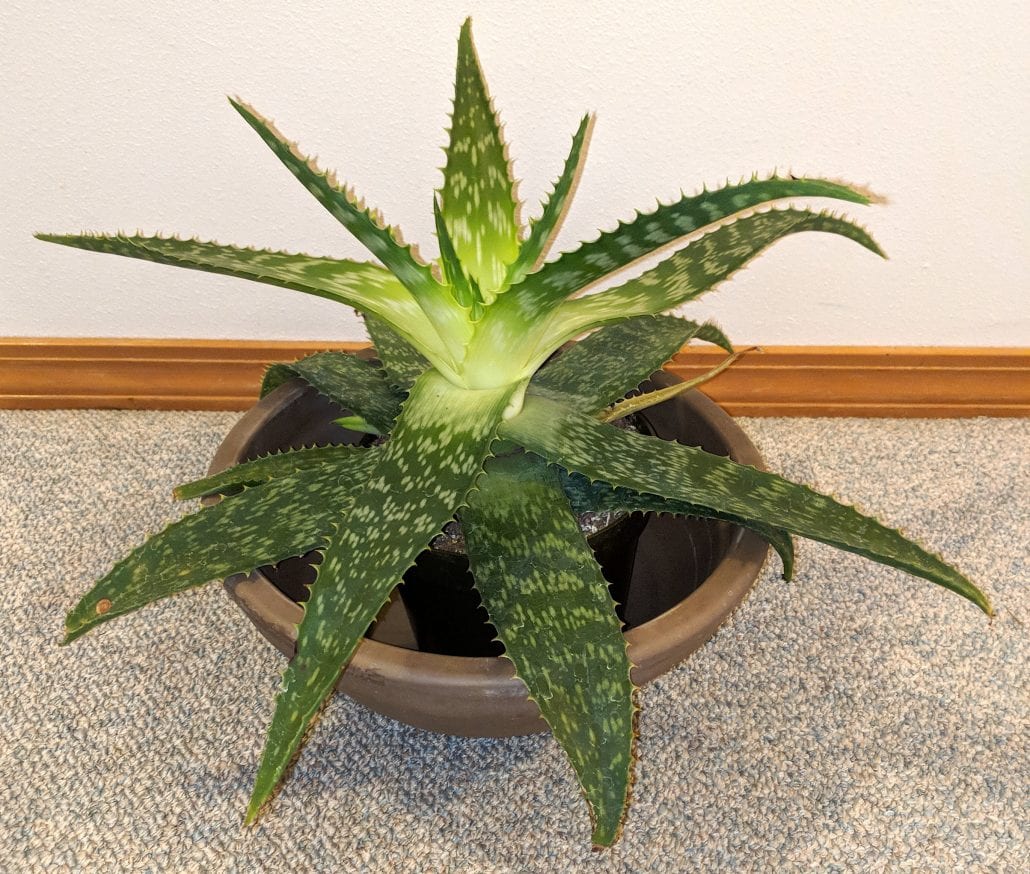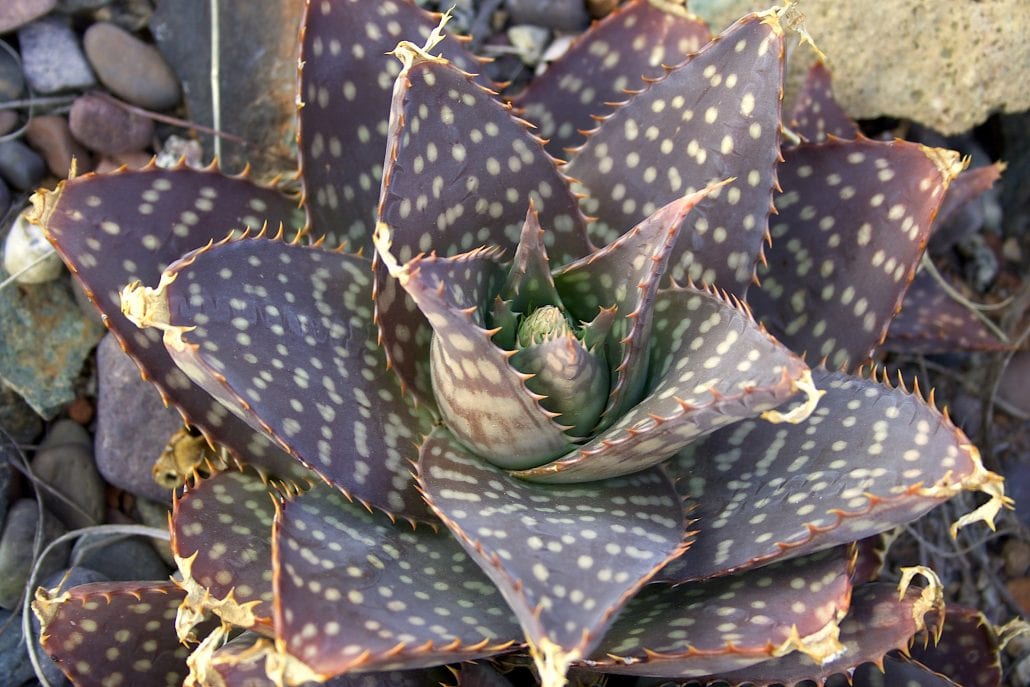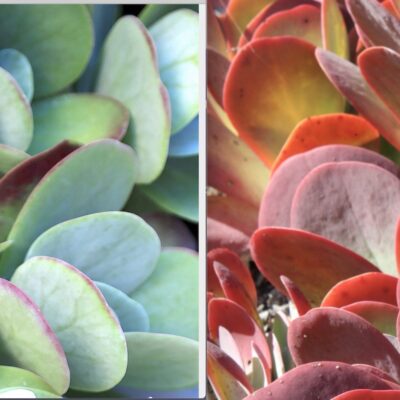
How to Make Succulents Bloom
Above: The problem could be not enough sunlight.
Is there a way to make succulents bloom? Yes and no. It partly depends on a plant's age. It may not be large or mature enough to gear up for reproduction (which is the point of flowers). But there IS something you can do to make a succulent bloom if it's just sitting there, sulking, with no apparent reason not to produce a prized flower spike---if it's the proper season. Most succulents bloom in spring and summer, but others (like aloes and crassulas) flower in midwinter.
So here's the secret: Succulents (most plants for that matter) need light in order to flower. Sun is essential to photosynthesis, which creates energy and fuels new growth. All plants (actually, all living things) want to reproduce, and for plants that means being robust enough to bloom. Because most succulents come from warm, dry climates, they require a lot of light.
If this aloe could talk, it would say, "I'm starved for light! I may not be able to bloom! Help!"

Aloe maculata (A. saponaria)
Above: A specimen of Aloe maculata growing indoors in the Seattle area. Although it's healthy, it has flattened and elongated its leaves in order to expose as much of its surface as possible to light. The term for this is etiolation (et-ee-oh-lay-shun).

Aloe maculata (A. saponaria) in bloom

Related Info on this site
Aloes: Uses, Photos, IDs & Varieties
Aloes: How To Grow & Varieties All about aloes plus a photo gallery of aloes ID’d and in bloom See All Succulent Types Aeonium Agaves Aloes Cactus Crassula Echeveria Euphorbias Ice Plants Kalanchoe Portulacaria Senecio About Aloes There are dozens of species of Aloe, from tall trees to dwarf cultivars. Aloes typically have juicy, triangular leaves…
How to Keep Succulents Colorful
Are your succulents well stressed? Given the right conditions, certain varieties turn from green or blue to brilliant reds, oranges and yellows. See 50 before-and-afters. How much a succulent “colors up” depends on…
Summer Care for Succulents: Heat and Sun Concerns
Don’t let summer sun and heat harm your succulents! Heat generally isn’t a concern. Although some succulents (like sempervivums) tend not to thrive in temps above 80 or 90 degrees F, the majority are fine. It’s heat plus sun that’s the concern.




I just repotted a couple of A. maculata that have been largely ignored/occasionally watered for several years. They’ve never bloomed but have produced many pups, which I potted up separately. The mother plants are very red with dry tips from lots of sun exposure, but they are now in bright shade. Will their green color return, or only affect new growth?
Yes, they’ll revert to green in bright shade (the entire plant, not just new growth). I’m surprised they didn’t bloom, considering all the sun they received!
Hi Debra, I have a succulent that has flowered. I ‘think’ it is an aloe species judging by the pictures on your web site. Now that the flowers are spent, what do I do with the flower spike itself? Your advice is appreciated!
Hi Steve — It should snap off cleanly if you push it to one side. Or use scissors or clippers to cut it close to the plant. DLB
Hi. My indoor succulents are getting 18hrs a day of led light. But the echeverias are putting out thick but very small leaves. I bought a 4” echeveria and over the whole summer (4months) it grew layer after layer of full small leaves. Now it’s taller but it’s only 2” wide. What the heck is going on? All others are growing great! Please help!!! I use co-co-peat and pearlite and some have regular potting soil with pearlite. I’m thinking it’s a nutrient deficiency. But all other kinds like sedum an so on are nice an tight an growing wonderfully. Help
Hi Tammy, Sounds like you’re doing everything right. Do the echeverias have thick stems? Sometimes old echeverias will only produce small rosettes. If you want to send me a photo, you’re welcome to do so in a reply to my newsletter.
Hi, I’m about to build a frame 4” high 12” deep 16” wide. I want to fill it with as many succulents as possible, with Home Depot succulent mix. Tell me what Not to do. Thank you
Hi John,
A few pages on my site to get you started:
25 Succulent Mistakes and Solutions https://debraleebaldwin.com/succulent-how-to/12-mistakes-beginners-make-with-succulents/
Succulent Container Design https://debraleebaldwin.com/succulent-container-design/
Succulent FAQs https://debraleebaldwin.com/succulent-faqs/
— Debra
12 x 16” 4 “ deep , with decorative rocks or anything you can recommend.